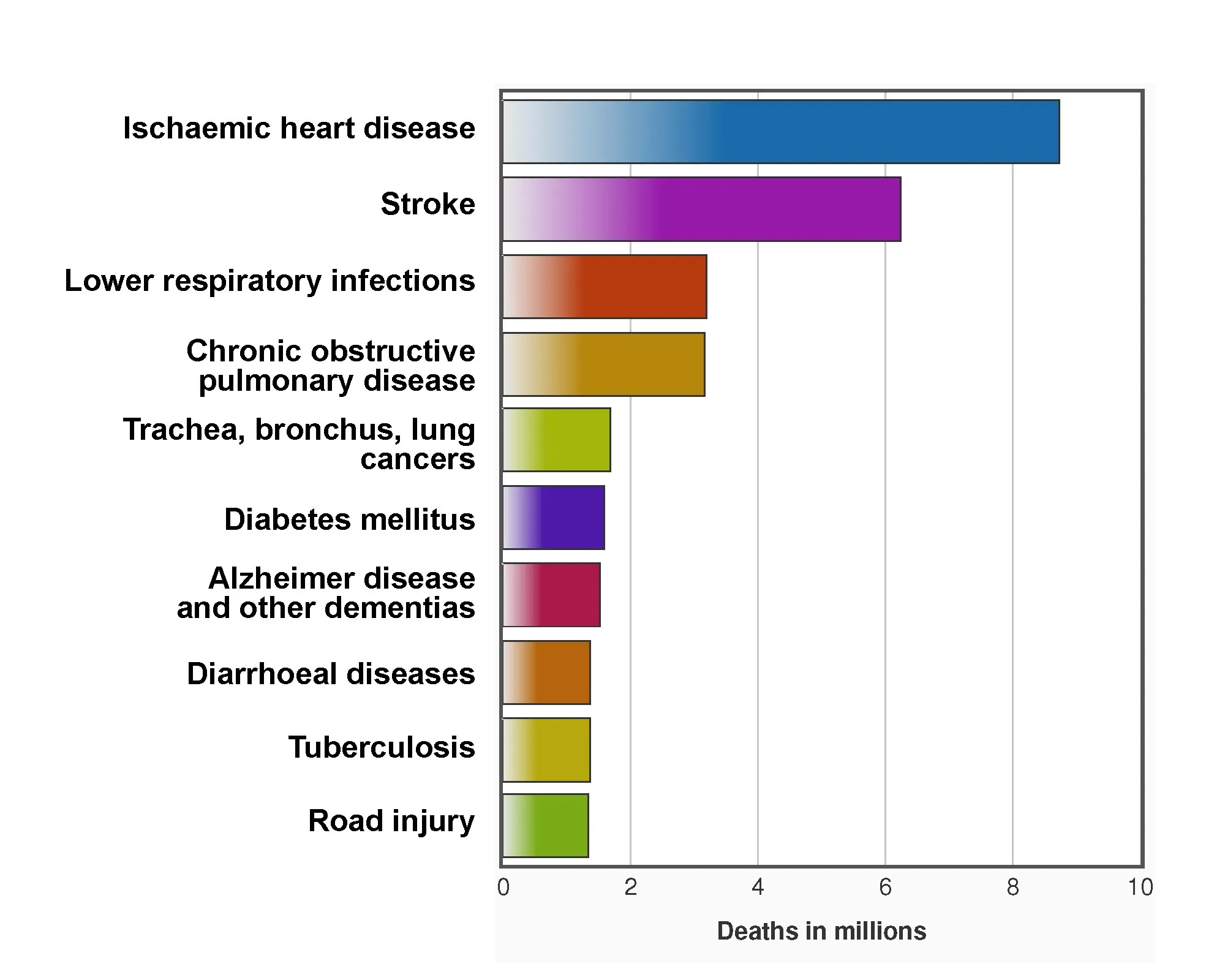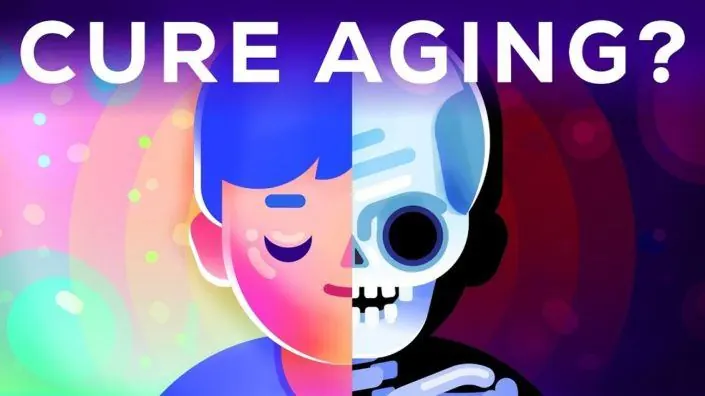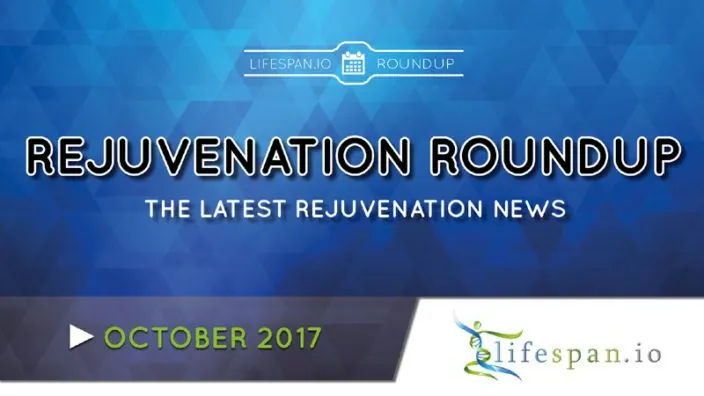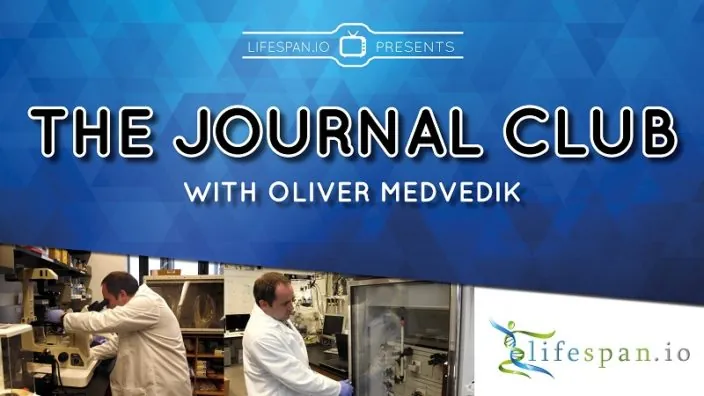Given that there is to be a Reddit AMA on December 7th with Dr. Aubrey de Grey in the Futurology subreddit, we think it’s a great time to have a look at the progress that the SENS Research Foundation has made in tackling the aging processes. What follows is a brief summary of some of the highlights of their research efforts as well as the details of the AMA, in which you can ask Aubrey anything you like about his work.
Today, there are many drugs and therapies that we take for granted. However, we should not forget that what is common and easily accessible today didn’t just magically appear out of thin air; rather, at some point, it used to be an unclear subject of study on which “more research was needed”, and even earlier, it was just a conjecture in some researcher’s head.
Hopefully, one day not too far into the future, rejuvenation biotechnologies will be as normal and widespread as aspirin is today, but right now, we’re in the R&D phase, so we should be patient and remind ourselves that the fact that we can’t rejuvenate people today doesn’t mean that nothing is being done or has been achieved to that end. On the contrary, we are witnessing exciting progress in basic research—the fundamental building blocks without which rejuvenation, or any new technology at all, would stay a conjecture.
In particular, SENS Research Foundation (SRF), a pioneering organization of the field, is sometimes unjustly accused by skeptics for failing to produce results. But produce results it has, and many at that. Skeptics either decide to ignore them or do not have access to reliable sources. For the benefit of the latter, we’ll discuss below what has been achieved by SRF over the past few years, in relation to the infamous “seven deadly things”, the seven categories of damage that aging causes as described in the SENS repair approach.
Mitochondrial mutations
In a nutshell, a mitochondrion is a cell component that is in charge of converting food nutrients into ATP (adenosine triphosphate), a chemical that powers cellular function. Your DNA is contained within the nucleus of each of your cells, but this isn’t the only DNA in your body; mitochondria have their own DNA (known as mtDNA), likely because, at the dawn of life, they were independent organisms that eventually entered a symbiotic relationship with eukaryotic cells, such as those found in our bodies.
Unfortunately, as mitochondria produce ATP, they also produce so-called free radicals as a byproduct—atoms with unpaired electrons that seek to “pair up” with other electrons, and to do so, they’ll gladly snatch them from other molecules nearby, damaging them. As free radicals are created by mitochondria, they’re very close to mtDNA, which is thus very susceptible to being damaged and undergoing mutations.
Mitochondria with damaged DNA may become unable to produce ATP or even produce large amounts of waste that cells cannot get rid of. To add insult to injury, mutant mitochondria have a tendency to outlive normal ones and take over the cells in which they reside, turning them into waste production facilities that increase oxidative stress—one of the driving factors of aging.
MitoSENS: How to solve this problem, and how far we’ve got
Cell nuclei are far less exposed to free-radical bombardment than mitochondria, which makes nuclear DNA less susceptible to mutations. For this reason, the cell nucleus would be a much better place for mitochondrial genes, and in fact, evolution has driven around 1000 of them there. Through a technique called allotopic expression, we could migrate the remaining genes to the nucleus and solve the problem of mitochondrial mutations.
Human-made allotopic expression was a mere theory until late 2016, when, thanks to the successful MitoSENS crowdfunding campaign on Lifespan.io, a proof of concept was finally completed. Dr. Matthew O’Connor and his team managed to achieve stable allotopic expression of two mitochondrial genes in cell culture, as reported in the open-access paper[1] they published in the journal Nucleic Acids Research. As Aubrey de Grey himself explains in this video, of the 13 genes SRF is focusing on, it’s now managed to migrate almost four. This had never been done before and is a huge step towards addressing this aspect of aging in humans. In the past few months, the MitoSENS team has presented its results around the world and worked on some problems encountered in the project.
A list of SRF-funded papers on the topic of mitochondrial mutations can be found here. A more detailed description of its intramural MitoSENS research can be found here.
Lysosomal dysfunction
Lysosomes are digestive organelles within cells that dispose of intracellular garbage—harmful byproducts that would otherwise harm cells. Enzymes within lysosomes can dispose of most of the waste that normally accumulates within cells, but some types of waste, collectively known as lipofuscin, turn out to be impossible to break down. As a result, this waste accumulates within the lysosomes, eventually making it harder for them to degrade even other types of waste; in a worst-case scenario, overloaded lysosomes can burst open and spread their toxic contents around.
This eventuality is especially problematic for cells that replicate little or not at all, such as heart and nerve cells—they’ve got all the time in the world to become swamped in waste, which eventually leads to age-related pathologies, such as heart disease and age-related macular degeneration.
LysoSENS: How to solve this problem, and how far we’ve got
As normal lysosomal enzymes cannot break down lipofuscin, a possible therapy could equip lysosomes with better enzymes that can do the job. The approach suggested by SRF originates with ERT—enzyme replacement therapy—for lysosomal storage diseases. This involves identifying enzymes capable of breaking down different types of intracellular junk, identifying genes that encode for these enzymes, and finally delivering the enzymes in different ways, depending on the tissues and cell types involved.
SRF funded a preliminary research project on lipofuscin clearance therapeutics at Rice University[2] and another project relating to atherosclerosis and the clearance of 7-ketocholesterol[3] (a lipofuscin subtype), which eventually spun into Human Rejuvenation Biotechnologies, an early-stage private startup funded by Jason Hope.
A LysoSENS-based approach is currently being pursued by Dr. Kelsey Moody, who used to work at SRF. Dr. Moody has been working on an ERT treatment for age-related macular degeneration. The treatment consists in providing cells of the macula (a region of the eye’s retina) with an enzyme capable of breaking down a type of intracellular waste known as A2E. The treatment, called LYSOCLEAR, is being worked on by Moody’s company Ichor Therapeutics, which earlier this year has announced a series A offering to start Phase I clinical trials of its product.
If LYSOCLEAR proves successful, it could pave the way for future LysoSENS-based therapies to treat lysosomal dysfunction in different tissues.
A list of SRF-funded papers on the topic can be found here.
Cellular senescence
As cells divide, their telomeres—the end-parts of chromosomes protecting them from damage—shorten. Once a critical length has been reached, cells stop dividing altogether and enter a state known as senescence. Senescent cells are known to secrete a cocktail of chemicals called SASP (Senescence Associated Secretory Phenotype), which promotes inflammation and is associated with several age-related conditions.
However, senescent cells are a bit of a double-edged sword; as explained by Professor Judy Campisi during RB2016, as long as they’re not too numerous, senescent cells carry out an anti-cancer function and may promote wound healing; however, too many of them have the opposite effect, and on top of that, they induce neighboring cells to undergo senescence themselves, starting a dangerous spiral.
Normally, senescent cells destroy themselves via programmed cell death, known as apoptosis, and are then disposed of by the immune system, but some of them manage to escape destruction, and as the immune system declines with age, this gets worse.
The result is that late in life, senescent cells have accumulated to unhealthy amounts and significantly contribute to the development of age-related diseases. Osteoarthritis, cardiovascular diseases, cancer, metabolic disorders such as diabetes, and obesity are all linked to the chronic age-related inflammation to which senescent cells contribute.
ApoptoSENS: How to solve this problem, and how far we’ve got
The proposed SENS solution is straightforward: if senescent cells become too numerous, then they need to be purged. Since they are useful in small amounts, the optimal solution would be periodically removing excess senescent cells without eradicating them entirely—and more importantly, leaving other cells unharmed.
This could potentially be achieved by either senolytic drugs or gene therapies that selectively target senescent cells and trigger programmed cell death. Indeed, a great deal of recent focus by researchers have been on finding ways to remove senescent cells using senolytic therapies.
Another approach that could complement senolytics is to address why the immune system stops clearing senescent cells effectively in the first place. This approach focuses on macrophages and other immune cells involved in clearing senescent cells, aiming to reduce inflammation so that these cells begin to function properly again. The irony is that as inflammation rises with age, the immune system that is supposed to clear senescent cells and keep inflammation levels down actually starts to create more inflammation and becomes part of the problem by not doing its job properly.
SRF has funded a number of studies on the subject of cellular senescence, and it’s recently begun working on a project in collaboration with the Buck Institute for Research on Aging, which is focusing on the immune system and its role in clearing senescent cells. Another extramural project, again with the Buck Institute, is focussed on SASP inhibition.
Senescent cell clearance has been all the rage for the past two years or so; Lifespan.io has hosted the MMTP project, which focused on testing senolytics in mice, and this was later followed by CellAge’s project to design synthetic biology-based senolytics.
There are other companies that have joined the race to add senescent cell clearance to the standard toolkit of doctors, such as Unity Biotechnology and Oisin Biotechnologies.
Unity’s approach uses a drug-based approach to senolytics and is scheduled to enter human clinical trials in 2018. A number of other research teams are also developing drug-based approaches to removing senescent cells, and the competition looks set to be fierce in this area in the coming years.
Oisin’s approach, which we discussed here, makes use of suicide genes and hopefully will be tested in clinical trials not too far into the future, thanks to venture funding presently being collected. If this system can be made to work, it will allow very selective targeting of senescent cells by destroying only those giving off a target gene or genes. Thus, if a unique gene expression profile for senescent cells is determined, it would mean only those cells were destroyed, with less risk of off-target effects.
Oisin owes its existence to the SENS Research Foundation and the Methuselah Foundation, which provided the necessary seed funding. Kizoo Technology Ventures has also invested in Oisin.
Extracellular crosslinks
The so-called extracellular matrix is a collection of proteins that act as scaffolding for the cells in our body. This scaffolding is rarely if ever replaced, and a really bad consequence of this is that its parts eventually end up being improperly linked to each other through a process called glycation—the reaction of (mainly) blood sugar with the proteins that make up the extracellular matrix itself.
The resulting cross-links impair the function and movement of the linked proteins, ultimately stiffening the extracellular matrix, which makes organs and blood vessels more rigid. Eventually, this leads to hypertension, high blood pressure, loss of skin elasticity, and organ damage, among other problems.
While there are different types of cross-links—known as AGEs, short for advanced glycation end-products—glucosepane is arguably the worst, being the most common and long-lasting of all, and the body is very ill-equipped to break it down.
GlycoSENS: How to solve this problem, and how far we’ve got
In order to eliminate unwanted cross-links, the SENS approach proposes to develop AGE-breaking molecules that may indeed sever the linkages and return tissues to their original flexibility. Of course, in order to do so, crosslink molecules need to be available for research to attempt to combat them with drugs, and especially in the case of glucosepane, this has been a problem for years.
Glucosepane is a very complex molecule, and very little of it can be extracted from human bodies, and not even in its pure form. This has been greatly hampering the progress of research against glucosepane, but thankfully, this problem is now solved thanks to a collaboration between the Spiegel Lab at Yale University and the SENS Research Foundation, which financially supported the study. It is now possible to fully synthesize glucosepane, allowing for researchers to create it on demand and at a cost-effective price.
The Spiegel Lab’s scientists are now developing anti-glucosepane monoclonal antibodies to cleave unwanted cross-links. The collaboration between the Spiegel Lab and SRF dates all the way back to 2011, but it was in 2015 that the Lab announced its success and published a related paper [4] in the journal Science.
Further information on glucosepane cross-link breakers can be found in this interview with Dr. David Spiegel from Yale University on Fight Aging!; a list of studies on the subject funded or otherwise supported by the SRF is available here.
SRF also worked with the Babraham Institute on a cross-link quantification project.
Let’s help SRF move forward
As we have seen, SRF has produced plenty of results; the projects we discussed are either recent or ongoing, and yet others were carried out in the past. However, much more work still needs to be done before the first rejuvenation therapies move from the lab to the clinic.
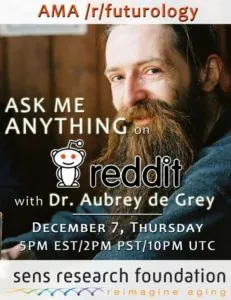 If you would like to know more about SRF’s work or have questions not covered in this article, you have a great opportunity to ask none other than Dr. Aubrey de Grey himself during his AMA (“ask me anything”) on Reddit. On December 7, at 14:00 PST (22:00 UTC, 17:00 EST), Aubrey will be on /r/futurology to answer any question at all, so save the date! The Futurology mods are also taking pre-AMA questions here if you cannot wait to ask Aubrey anything or cannot make the event.
If you would like to know more about SRF’s work or have questions not covered in this article, you have a great opportunity to ask none other than Dr. Aubrey de Grey himself during his AMA (“ask me anything”) on Reddit. On December 7, at 14:00 PST (22:00 UTC, 17:00 EST), Aubrey will be on /r/futurology to answer any question at all, so save the date! The Futurology mods are also taking pre-AMA questions here if you cannot wait to ask Aubrey anything or cannot make the event.
Readers who wish to donate to SRF to help the organization in its crusade against the ill health of old age can do so by contributing to its winter fundraiser or even becoming SRF patrons. Have a look at SRF’s donation page to find out more.
Literature
[1] Boominathan, A., Vanhoozer, S., Basisty, N., Powers, K., Crampton, A. L., Wang, X., … & O’Connor, M. S. (2016). Stable nuclear expression of ATP8 and ATP6 genes rescues a mtDNA Complex V null mutant. Nucleic acids research, 44(19), 9342-9357.
[2] Gaspar, J., Mathieu, J., & Alvarez, P. (2016). A rapid platform to generate lipofuscin and screen therapeutic drugs for efficacy in lipofuscin removal. Materials, Methods and Technologies, 10, 1-9.
[3] Mathieu, J. M., Wang, F., Segatori, L., & Alvarez, P. J. (2012). Increased resistance to oxysterol cytotoxicity in fibroblasts transfected with a lysosomally targeted Chromobacterium oxidase. Biotechnology and bioengineering, 109(9), 2409-2415.
[4] Draghici, C., Wang, T., & Spiegel, D. A. (2015). Concise total synthesis of glucosepane. Science, 350(6258), 294-298.

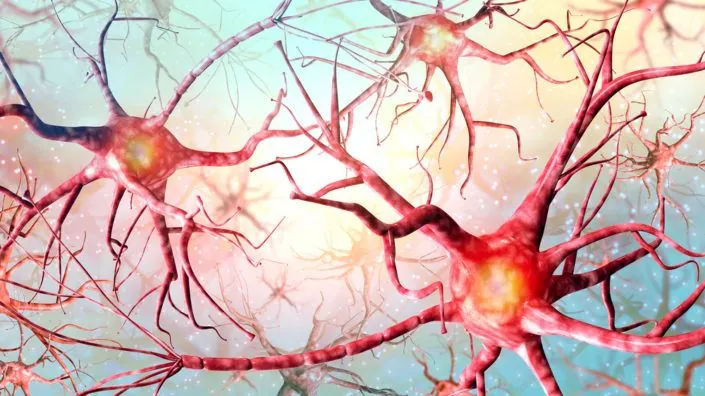
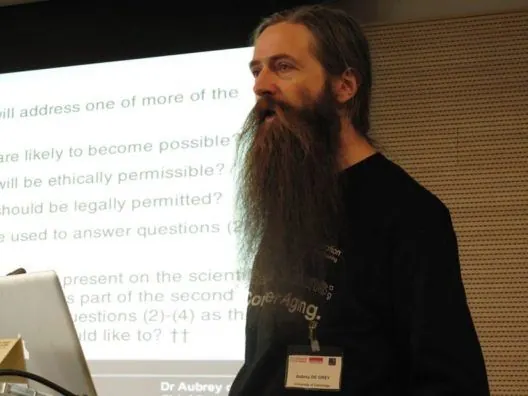
 If you would like to know more about SRF’s work or have questions not covered in this article, you have a great opportunity to ask none other than Dr. Aubrey de Grey himself during his AMA (“ask me anything”) on Reddit. On December 7, at 14:00 PST (22:00 UTC, 17:00 EST), Aubrey will be on
If you would like to know more about SRF’s work or have questions not covered in this article, you have a great opportunity to ask none other than Dr. Aubrey de Grey himself during his AMA (“ask me anything”) on Reddit. On December 7, at 14:00 PST (22:00 UTC, 17:00 EST), Aubrey will be on 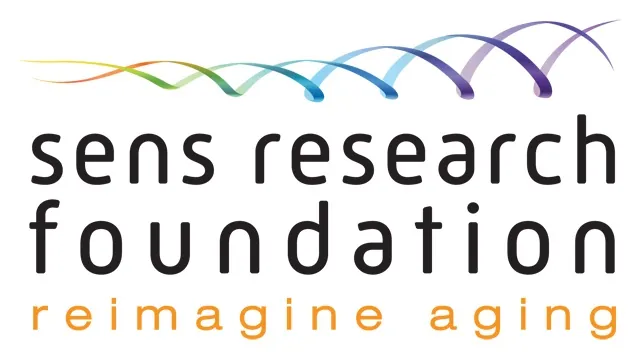
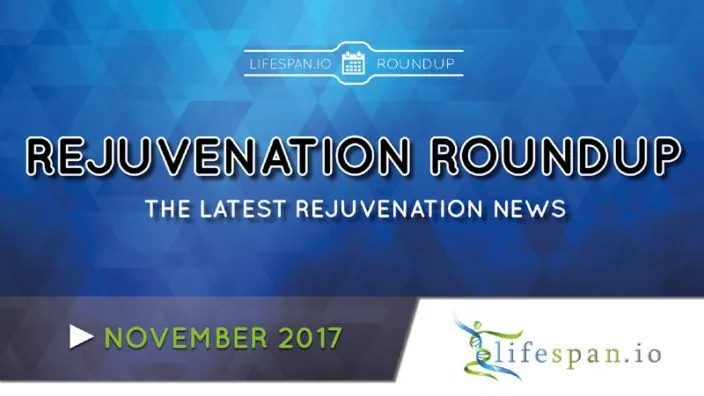
 It appears that WHO has forgotten to include priorities related to aging in its 13th draft programme of work 2019-2023. This extremely important issue was popularised thanks to the efforts of Dr. Ilia Stambler, who recently co-authored a
It appears that WHO has forgotten to include priorities related to aging in its 13th draft programme of work 2019-2023. This extremely important issue was popularised thanks to the efforts of Dr. Ilia Stambler, who recently co-authored a 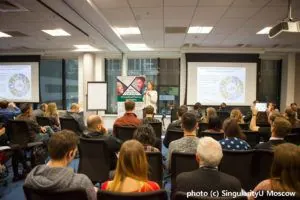 LEAF, in collaboration with
LEAF, in collaboration with 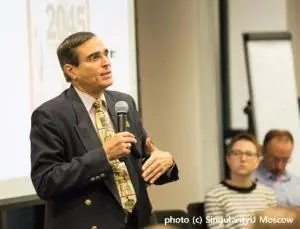 The list of speakers included Jose Luis Cordeiro, fellow of the
The list of speakers included Jose Luis Cordeiro, fellow of the  Kurzgesagt has released the
Kurzgesagt has released the  Just as traditional as the SENS Winter Fundraiser, the
Just as traditional as the SENS Winter Fundraiser, the  Our friends at Geroscience have published the
Our friends at Geroscience have published the 

